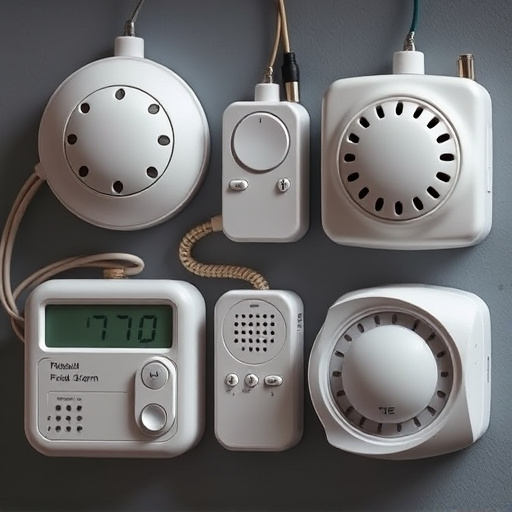Personal alarm signals, influenced by culture, experience, and preference, vary greatly. Recognizing these "How Far Personal Alarm Sounds" is crucial for effective distress response. Tracking technology integrated into modern alarms enhances safety in remote areas with GPS, distinct sounds, and real-time alerts via mobile apps. Balancing safety and privacy requires clear guidelines for data handling, user consent, and security to manage the range of personal alarm sounds, empowering users to control their sensitivity and activation ranges while preserving privacy.
Personal distress signals, from cries to specific vocal patterns, can be life-saving. This article explores these sounds, their significance in identifying personal distress, and how tracking technology is revolutionizing safety. We delve into the ethical implications of personal alarm systems, balancing privacy with protection. By understanding both the art and science of these signals and the capabilities of modern tracking, we can enhance our ability to respond effectively, ensuring safety without compromising individual freedom.
Keywords: personal alarm sounds, distress tracking, safety technology.
- Understanding Personal Distress Signals: Recognizing the Sounds and Their Significance
- Incorporating Tracking Technology: Enhancing Safety with Digital Solutions
- Balancing Privacy and Protection: Ethical Considerations for Personal Alarm Systems
Understanding Personal Distress Signals: Recognizing the Sounds and Their Significance
Personal distress signals, such as alarm sounds, are unique to each individual, reflecting their specific emotional states and needs. Understanding these signals is crucial for effective communication and self-awareness. The range and intensity of personal alarm sounds can vary greatly from person to person, influenced by factors like cultural background, past experiences, and personal preferences. Some individuals might express distress through loud, piercing noises, while others may opt for softer, more subtle cues.
Recognizing these signals is significant because it allows us to respond appropriately. For instance, a sudden, loud cry might indicate extreme panic or pain, warranting immediate assistance. Conversely, a quiet, steady hum could signal discomfort or mild stress, prompting a calmer approach. By paying attention to the “how far” and “type” of personal alarm sounds, we can better navigate and support each other in moments of distress.
Incorporating Tracking Technology: Enhancing Safety with Digital Solutions
Incorporating tracking technology into personal distress signals has revolutionized safety measures, especially for individuals who frequently venture into remote or unfamiliar areas. Modern digital solutions offer a range of features beyond traditional alarms, providing a comprehensive safety net. These advanced systems not only emit loud and distinct sounds to alert nearby people when an individual is in distress but also utilize GPS tracking to pinpoint the user’s exact location. This capability is particularly valuable in vast or hard-to-navigate terrains, ensuring swift assistance even in the most challenging circumstances.
The integration of tracking technology into personal alarms empowers users with a sense of security and peace of mind, knowing that help can arrive promptly. Moreover, these digital solutions often include mobile apps that allow users to send alerts manually or set automatic distress signals under defined conditions. This real-time communication feature enables individuals to maintain control over their safety, ensuring that support networks are aware of their location and well-being, especially during outdoor adventures or solo trips.
Balancing Privacy and Protection: Ethical Considerations for Personal Alarm Systems
Balancing privacy and protection is a delicate act, especially when discussing personal alarm systems designed with tracking capabilities. As technology advances, these devices offer enhanced safety measures, allowing users to emit distress signals that can be tracked in real-time. However, this raises important ethical considerations regarding individual privacy rights. The range at which these personal alarm sounds can be heard or detected could potentially invade personal spaces, and data collected during such emergencies might be misused if not properly secured.
When developing and deploying personal alert systems, it’s crucial to establish clear guidelines that respect user autonomy while ensuring effective protection. This includes transparent data-handling practices, user consent for tracking, and implementing robust security measures to safeguard sensitive information. How far a personal alarm sound travels should be carefully considered, and users should have control over the sensitivity and activation range of their alerts, striking a balance between accessibility for help and respect for privacy in various environments.
Personal distress signals, whether vocal or through alarm sounds, have evolved from basic calls for help to sophisticated tools in personal safety. By integrating tracking technology, these systems offer enhanced security, enabling individuals to communicate their location and distress in real-time. However, as we explore the potential of personal alarms, it’s crucial to balance privacy concerns with protection. Ethical considerations are vital to ensure these technologies respect individual autonomy while providing much-needed assistance, especially for vulnerable populations. Understanding both the capabilities and limitations of personal alarm sounds is key to harnessing their full potential in today’s digital age.
